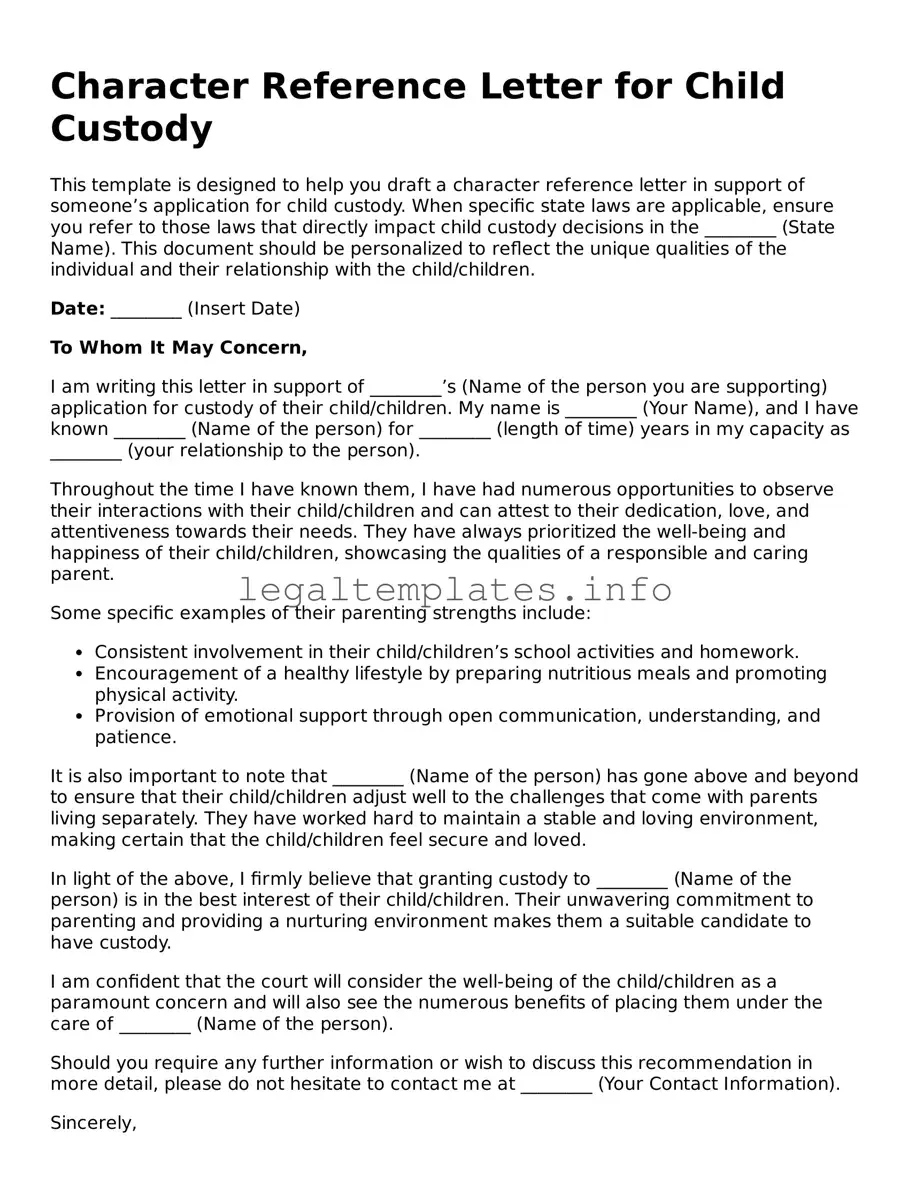What is a Character Reference Letter for Child Custody?
A Character Reference Letter for Child Custody is a document written by someone who knows one of the parents involved in a child custody case well. This letter provides insight into the character of the parent from the perspective of a friend, family member, or acquaintance. It aims to support the parent's ability to provide a safe, stable, and loving environment for their child.
Who can write a Character Reference Letter for Child Custody?
Anyone who has a meaningful relationship with the parent and has spent enough time to comment knowledgeably on their character, parenting skills, and relationship with the child can write a character reference letter. Common examples include family members, friends, neighbors, coworkers, and church members. The writer should be someone who can provide positive and truthful observations based on their interactions with the parent and child.
What should be included in the Character Reference Letter?
The letter should include the writer's relationship to the parent, observations of the parent’s interactions with their child, examples of positive parenting or moments that demonstrate the parent’s commitment to the child’s wellbeing, and any remarks on the parent’s stability in providing a loving home. It should be honest, highlighting believable qualities without exaggeration. Concluding with a strong recommendation for custody, based on the witnessed interactions, is also crucial.
How should the Character Reference Letter be formatted?
The letter should be typed and not exceed one page in length. It should start with the writer’s name, address, and the date at the top, followed by a salutation to the judge or involved court. The body should clearly present the writer’s relationship to the parent and relevant observations. It should end with a formal closing, the writer’s signature, and their printed name.
Is it necessary to have the letter notarized?
While not always required, having the letter notarized can add a level of authenticity as it verifies the identity of the letter writer. It may lend more credibility to the document, especially in cases where the character reference could significantly impact the outcome of the custody decision. It's advisable to consult with a lawyer to determine if notarization is needed for your specific situation.
Can a Character Reference Letter negatively impact a child custody case?
If the letter contains false statements, exaggerations, or irrelevant information, it could negatively impact the case. The letter should focus on factual, positive observations and avoid any speculative or negative remarks about the other parent. The court’s interest is in the child’s welfare and any attempt to unjustly discredit the other parent can be seen unfavorably.
How many Character Reference Letters should be submitted?
There is no fixed number, but typically, two to three letters from different individuals who can attest to the parent's character and parenting ability may be sufficient. Each letter should offer unique insights into the parent’s life and their relationship with the child, providing the court with a well-rounded view of the parent’s capabilities and character.
